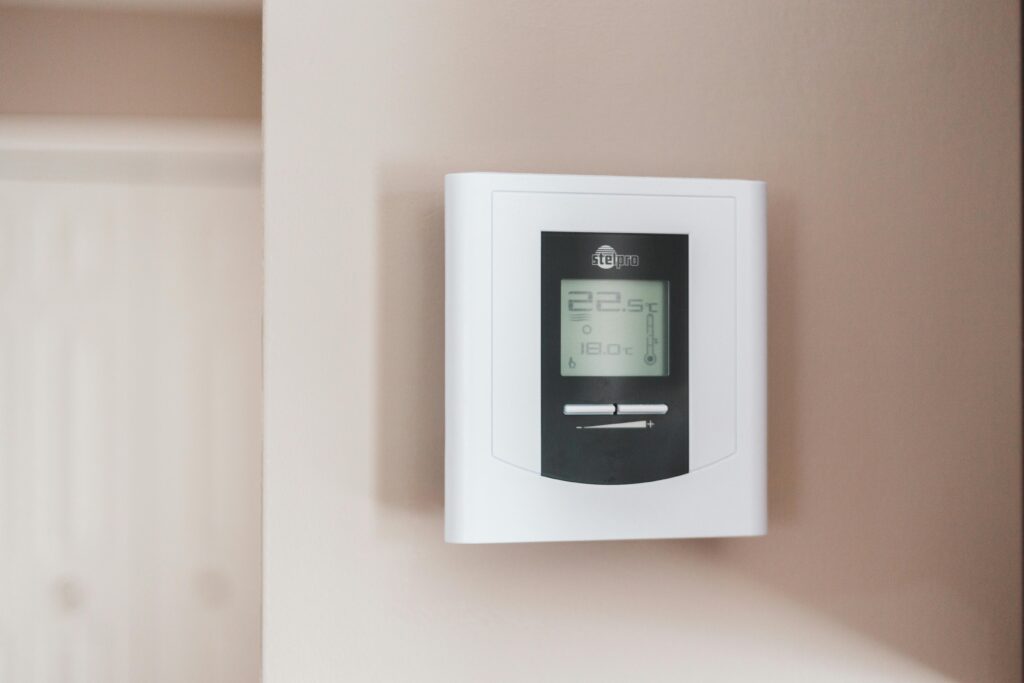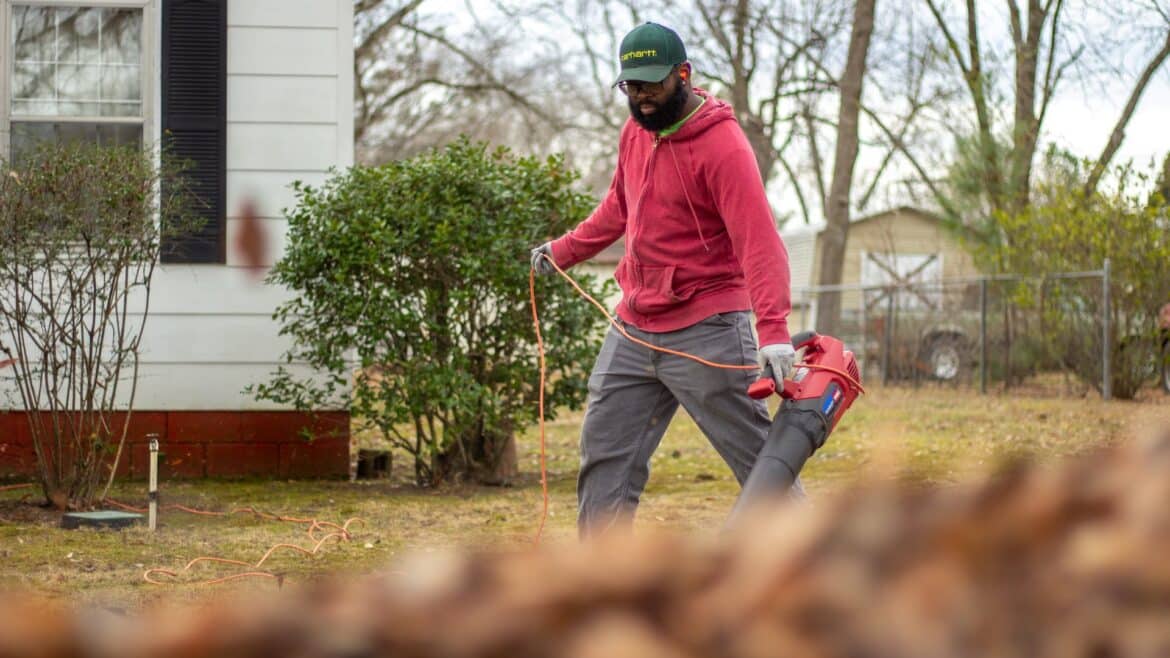Key Takeaways
- Seal Drafts and Save Up on Energy Costs: Simple fixes like weather stripping, caulking, and door sweeps can prevent heat loss and make your home more energy-efficient, saving money while keeping you warm.
- Upgrade to Smart Thermostats for Effortless Savings: A programmable or smart thermostat can lower your heating costs by up to 10% annually by optimizing your home’s heating schedule based on your habits.
- Routine Heating System Maintenance Pays Off: Regular maintenance, like changing filters and scheduling tune-ups, can improve your heating system’s efficiency, ensuring comfort and avoiding costly repairs.
As we turn up the heat to keep our homes warm and cozy, be prepared for higher energy bills this winter compared to last year. The Energy Administration’s most recent report showed that residential monthly energy bills were 2% higher in 2023 than the previous year…and last winter was milder than expected in our area. To help you prepare for the cold season, I wanted to share some ways to lower your winter power bill without sacrificing comfort!
1. Seal the Leaks: Stop Drafts in Their Tracks
When it comes to heat loss in your home, small drafts can lead to big problems. Tiny gaps around windows, doors, and other openings allow cold air in and warm air out, making your heating system work harder (and costing you more). The key to cutting your winter energy bill is stopping those leaks before they drain your budget.
- Weatherstripping: Installing or replacing old weatherstripping anywhere drafts come through is one of the easiest ways to seal gaps around doors and windows. It’s inexpensive, easy to install, and can make a noticeable difference in how warm your home feels.
- Caulking: For cracks and small gaps around window frames, door frames, or other areas where air could escape, a tube of caulk is your best friend. Not only does it stop drafts, but it also improves the overall insulation of your home.
Bonus tip: don’t forget to check areas around electrical outlets and light fixtures on exterior walls. These are often overlooked but can let in quite a bit of cold air.
- Door Sweeps: Gaps at the bottom of exterior doors are notorious for letting cold air sneak in. Installing a door sweep at the bottom can make a big difference in keeping that cold air out. It’s even more important in older homes, where settling may have created gaps between the door and the floor.
Sealing drafts can reduce your energy usage by up to 30%! It’s a quick and affordable fix that pays off immediately, both in comfort and cost savings.
2. Smart Thermostats: The Future of Savings
One of the smartest moves you can make to lower your winter power bill is upgrading to a programmable or smart thermostat. These devices give you complete control over your home’s heating schedule, allowing you to use energy more efficiently. Easily schedule your home to lower the heat during times where everyone is away from home, and schedule the heat to drop around bedtime.
Pro Tip: Studies show that cooler temperatures improve sleep quality and suggest that 60-67 degrees is the ideal range to maximize your sleep.
- Programmable Thermostats: A programmable thermostat allows you to set a heating schedule. For example, you can lower the temperature when you’re asleep or away at work and have it automatically warm up just before you get home. This way, you’re not wasting energy heating an empty house.
- Smart Thermostats: If you want to take things a step further, a smart thermostat, like Nest or Ecobee, learns your habits and adjusts the temperature based on your routine. Even better, you can control your home’s temperature remotely from your smartphone, so if you forget to adjust the heat before leaving the house, no problem! You can make changes with the touch of a button.
According to the Department of Energy, using a programmable or smart thermostat can save you up to 10% a year on heating and cooling costs. Plus, the convenience is hard to beat. Once you get one set up, you can pretty much “set it and forget it,” knowing it’s helping you save every day.
3. Regular Heating System Maintenance
Your heating system works hard all winter long, so keeping it in top shape is essential for both comfort and savings. A well-maintained heating system will run more efficiently, use less energy, and last longer — which means fewer repair bills down the road and less chance that your system will kick the bucket in the middle of a cold snap.
- Change Your Air Filters: It’s easy to forget, but changing your heating system’s air filter regularly is one of the simplest and most effective ways to keep your system running efficiently. A clogged filter makes it harder for your system to push warm air through your home, which means it has to work harder (and use more energy). Most experts recommend changing the filter every one to three months, depending on your system and how often you use it.
- Schedule a Professional Tune-Up: Just like your car, your heating system needs a little TLC to keep running smoothly. Having a professional come in once a year for a tune-up can help catch any small issues before they become big, expensive problems. A technician will clean the system, check for leaks, and ensure everything is working as it should.
- Bleed Your Radiators: If your home uses radiators, don’t forget to bleed them! Air bubbles can get trapped inside, reducing their efficiency. Bleeding your radiators releases that air, allowing them to heat your home more effectively.
Routine maintenance can improve your system’s efficiency by up to 15%, which translates into lower energy bills and fewer headaches when winter weather hits.
4. Layer Up and Lower the Thermostat
Here’s a simple but effective way to save money on heating: dress warmly and turn down the thermostat a couple of degrees. Even lowering your home’s temperature by just one or two degrees can result in noticeable savings on your power bill.
- Lower the Temperature: According to the U.S. Department of Energy, you can save about 1% on your heating bill for each degree you lower the thermostat. The recommended setting is 68°F while you’re at home and awake, and even lower when you’re asleep or away from home.
- Build a Fire: For homes lucky enough to have a gas or wood-burning fireplace, building a fire in the evening can heat your home pretty efficiently and will put out residual heat even after it burns out for the night.
Early fall is a good time to go ahead and get your chimney inspected ahead of the cold weather before chimney cleaning services book out their schedules. They’ll make sure there isn’t creosote buildup or cracks that could start a fire inside your chimney.
- Use Space Heaters: If you spend most of your time in one room, consider using a space heater to warm just that space instead of heating the entire house. Space heaters are great for small areas like home offices or bedrooms, allowing you to keep the thermostat lower without sacrificing warmth.
By layering up and keeping the thermostat lower, you’ll still feel cozy while shaving dollars off your heating bill.
5. Insulation: The Key to Lasting Comfort
Proper insulation is critical for keeping your home warm in winter and cool in summer. If your home isn’t well-insulated, you’re losing heat, which means your heating system has to work harder and your bills are higher. Taking the time to insulate your home properly can make a huge difference in both comfort and savings.
- Attic Insulation: Heat rises, so if your attic isn’t well-insulated, you’re losing a lot of warmth through the roof. Insulating your attic can prevent up to 25% of your home’s heat loss. Even if you already have insulation, it might be worth checking to see if it’s up to current standards.
- Wall and Floor Insulation: While your walls and floors might not seem like major sources of heat loss, older homes especially can benefit from added insulation in these areas. If certain rooms in your home feel colder than others, it could be due to insufficient insulation.
- Insulate Hot Water Pipes: Wrapping your hot water pipes in insulation helps prevent heat loss and reduces the energy your water heater needs to use. This can help cut costs, especially if you live in an area where the temperature drops significantly during the winter.
Proper insulation can cut heating and cooling costs by up to 20%, making it a worthwhile investment that pays off every year.
6. Maximize Natural Heat From the Sun
The sun is a free source of heat, so why not take advantage of it? During the day, open your curtains and let sunlight naturally heat your home. It’s a simple, no-cost way to make your space warmer.
- Open Curtains During the Day: South-facing windows get the most sunlight during the day, so make sure to keep your curtains or blinds open to let that heat in. This can help raise the temperature in your home by a few degrees without using any extra energy.
- Close Curtains at Night: Once the sun goes down, close your curtains to keep the warmth inside. For even better results, consider investing in thermal curtains, which are specifically designed to trap heat and block drafts.
Using sunlight to your advantage during the day can help reduce your heating costs and keep your home feeling cozy.
Wrapping Up
Whether you’re new to homeownership or just looking to make smarter choices in your home, these energy-saving tips will help you stay warm, cut costs, and feel more in control of your budget. From simple fixes like sealing drafts and using sunlight to larger projects like upgrading insulation or windows, there are plenty of ways to make your home more energy-efficient without sacrificing comfort.

August Market Insights: The Big Change Coming to Real Estate for Home Sellers
Read more...





















